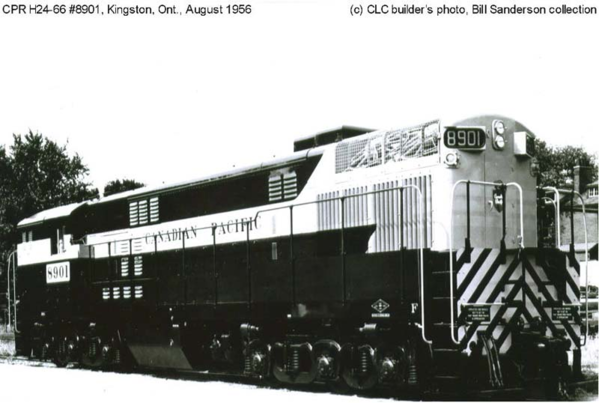Fairbanks Morse Trainmaster - Santa Fe Models: Did the Santa Fe have this model? I could not find any information on the internet.
One of my favorite locomotives is the FM Trainmaster Diesel Engine.
This locomotive has been produced in O scale by Lionel and MTH. The post war Lionel models have been highly collectible.
Here are some prototype details:
The H-24-66 was a diesel-electric railway locomotive model produced by Fairbanks-Morse and its Canadian licensee, the Canadian Locomotive Company. These six-axle hood unit road switchers, known as Train Masters were deployed in the United States and Canada during the 1950s. Each locomotive produced 2,400 horsepower (1.8 MW). They were the successor to the ultimately unsuccessful Consolidated line of cab units produced by F-M and CLC in the 1950s. In common with other F-M locomotives, the Train Master units employed an opposed piston-design prime mover. The official model designation was H-24-66 and rode on a pair of drop equalized three-axle "Trimount" trucks giving it an C-C wheel arrangement. Touted by Fairbanks-Morse as "...the most useful locomotive ever built..." upon its introduction in 1953, the 2,400 horsepower (1.8 MW) H-24-66 Train Master was the most powerful single-engine diesel locomotive available, legendary for its pulling power and rapid acceleration.
Units manufactured by Fairbanks-Morse (1953–1957) - 107
Lionel Santa Fe O scale model from 1981:
For the third year running, Lionel introduced another new FM in 1981. This one was decorated in Santa Fe colors, and was the first FM to include an electronic horn. The 8157 is hardest to find of the regularly catalogued FMs from the MPC era. 1981 was a banner year for Lionel, with many exciting top of the line engines and sets, and the 8157 was not given a prominent place in the catalog. Other pieces seemed to attract collectors' attentions that year, making the 8157 a tough find today.
MTH Santa Fe O Scale Model from 2002:
Cab Nos. 2822 2825 & 2827
Product Number: 20-2352-1








